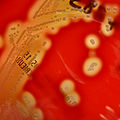Պատկեր:Diagnostic algorithm of possible bacterial infection.png

Նախադիտման չափ՝ 780 × 600 պիքսել։ Այլ թույլտվությաններ: 312 × 240 պիքսել | 625 × 480 պիքսել | 999 × 768 պիքսել | 1280 × 984 պիքսել | 2560 × 1968 պիքսել | 5376 × 4133 պիքսել.
Սկզբնական նիշք (5376 × 4133 փիքսել, նիշքի չափը՝ 3,16 ՄԲ, MIME-տեսակը՝ image/png)
Նիշքի պատմություն
Մատնահարեք օրվան/ժամին՝ նիշքի այդ պահին տեսքը դիտելու համար։
| Օր/Ժամ | Մանրապատկեր | Օբյեկտի չափը | Մասնակից | Մեկնաբանություն | |
|---|---|---|---|---|---|
| ընթացիկ | 17:50, 10 Մայիսի 2024 |  | 5376 × 4133 (3,16 ՄԲ) | Mikael Häggström | Simplified group B strep |
| 18:58, 9 Մայիսի 2024 |  | 5376 × 4133 (3,17 ՄԲ) | Mikael Häggström | Alphabetical order of beta hemolytic | |
| 14:58, 27 Հուլիսի 2023 |  | 5376 × 4133 (2,77 ՄԲ) | Mikael Häggström | Correction of group B strep | |
| 22:40, 26 Հուլիսի 2023 |  | 5376 × 4141 (2,78 ՄԲ) | Mikael Häggström | Update | |
| 20:36, 26 Հուլիսի 2023 |  | 5376 × 4181 (2,77 ՄԲ) | Mikael Häggström | Update | |
| 22:54, 25 Հուլիսի 2023 |  | 5237 × 4305 (2,75 ՄԲ) | Mikael Häggström | Uploaded a work by {{Mikael Häggström|cat=Medical diagrams}} from {{Own}} with UploadWizard |
Նիշքի օգտագործում
Հետևյալ էջը հղվում է այս նիշքին՝
Նիշքի համընդհանուր օգտագործում
Հետևյալ այլ վիքիները օգտագործում են այս նիշքը՝
- Օգտագործումը en.wikipedia.org կայքում
- Gram-negative bacteria
- Streptococcus
- Group A streptococcal infection
- Anaerobic organism
- Enterococcus
- Agar plate
- Streptococcus pneumoniae
- Microbiological culture
- Matrix-assisted laser desorption/ionization
- Pathogenic bacteria
- Staphylococcal infection
- Pseudomonas infection
- CAMP test
- User:L. Elizabeth Turner/Microbiological culture
















